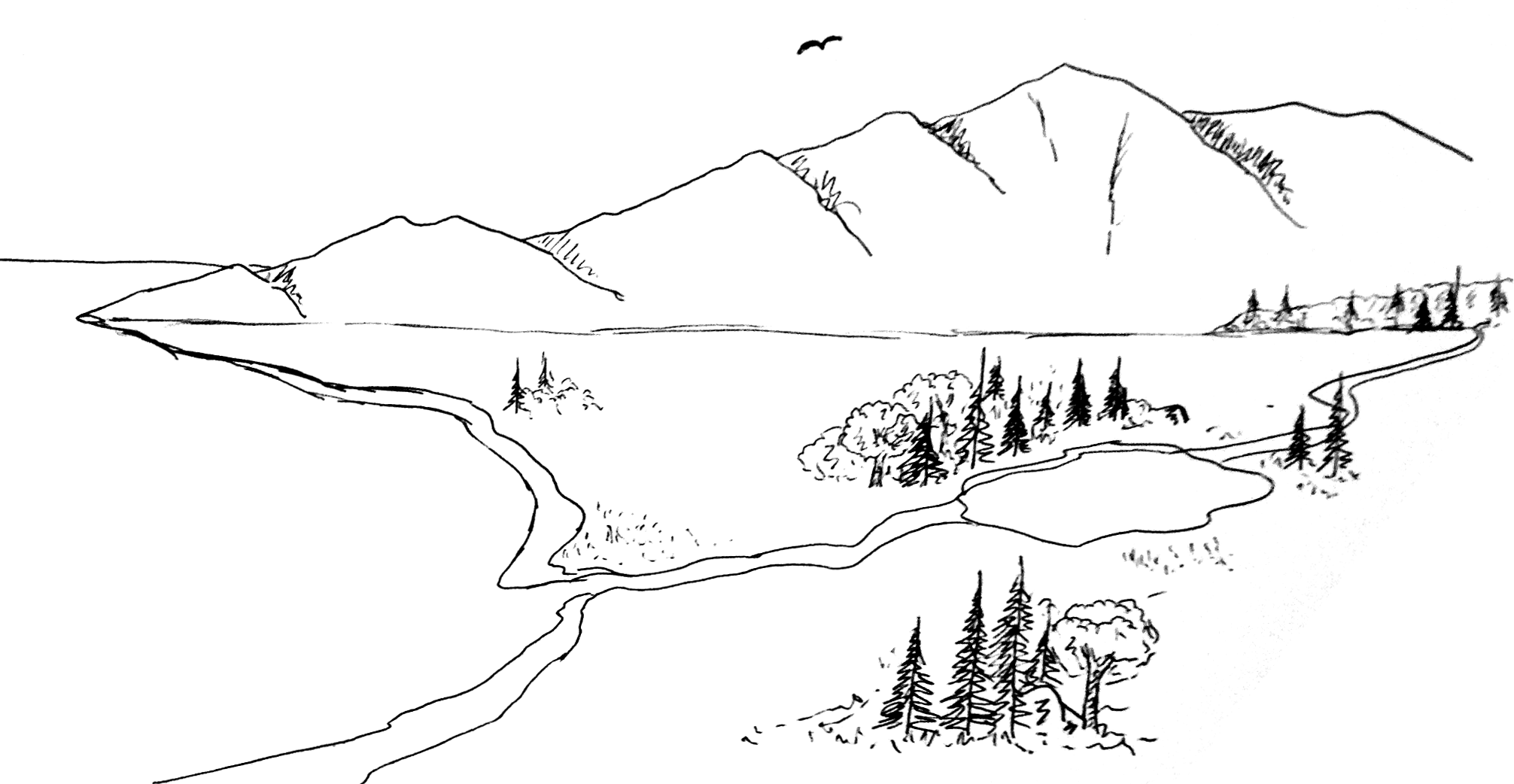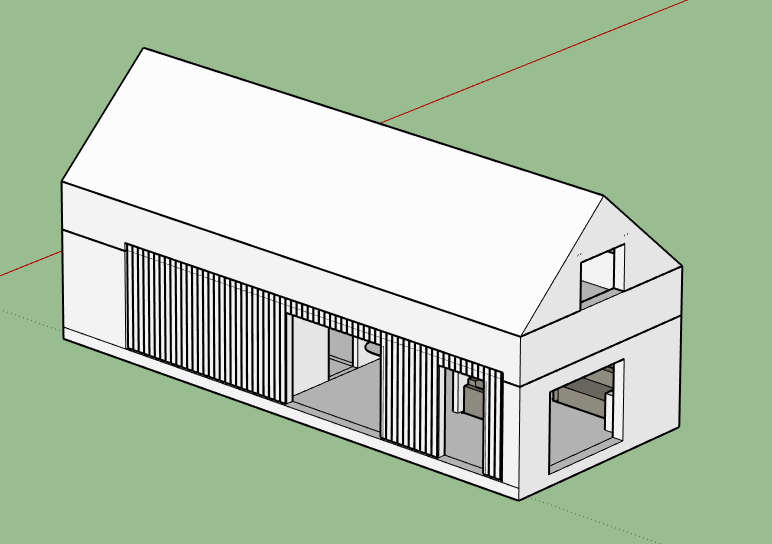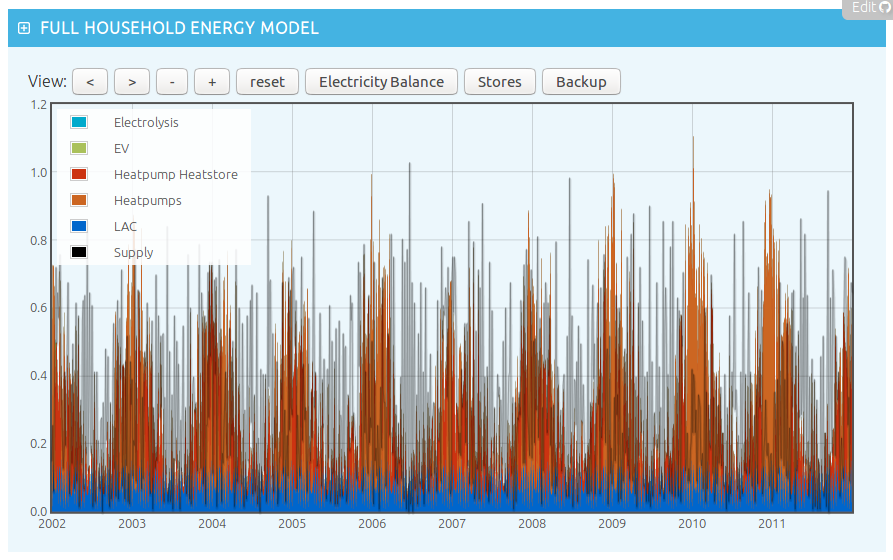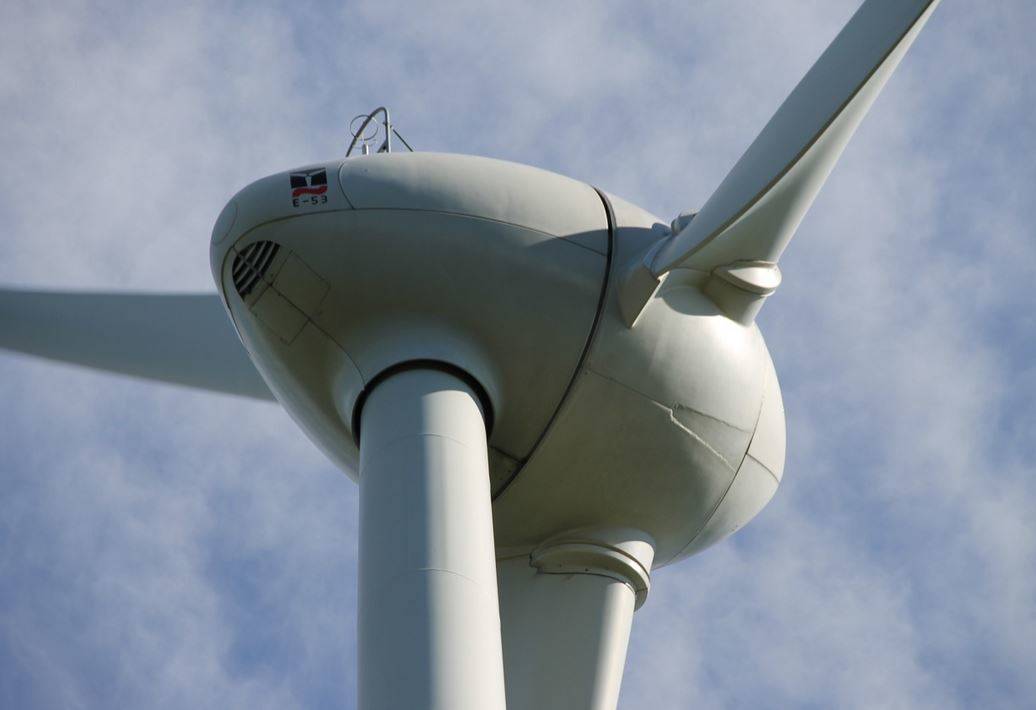A thought experiment (outline draft)
Imagine you have a pristine natural environment without human intervention, perhaps it has a mixture of habitats, a forest, a number of rivers, wetlands, grasslands, a lake, sea, mountains on the horizon. The area is teaming with wildlife, birds, insects, bees, small mammals, beavers, larger animals, fish. Its a beautiful, wild place with a comfortable climate, rich soil content, and even mineral deposits: copper, bauxite, iron, silica and rare earth’s.

Now imagine that you have a village, or small town worth of people 2,400 people in 1000 ‘households’. There are 9000m2 of land per household, 3750m2 per person, roughly equivalent to the land area per person in the UK today. This land covers all habitats and land types in our hypothetical thought experiment. Imagine to begin with that these 2,400 people have just arrived and have not yet modified the landscape in any way.
Lets say our weary travellers value the rest of nature around them highly and have a wish to minimise their impact as far as possible. Imagine being one of them every decision you make you are keen to consider carefully the balance between your impact and your value of the wild place you inhabit and its own right to existence.
At the same time the weather can get quite cold and rainy and if you don’t eat things wont go particularly well...
Lets imagine that the first task is to source, grow enough food to eat...
-
ZeroCarbonBritain food and diets, land use model, explore implications on biodiversity of different dietary choices. How much of the land gets used up?...
- shelter and biomass heat, land area implications, timber, hemp
… explore increasing the level of technology to ‘modern’ levels in stages … what are the implications on land use, biodiversity.
This is also a thought experiment into zero carbon energy, the scenario does not use fossil fuels given that climate change is likely to became one of the leading causes of biodiversity loss over time as well as detrimentally effecting food production due to extreme weather among other impacts.
An outline first attempt
1. Food
Starting with food. What if our hypothetical village choose to eat a diet similar to the average UK diet today? What would the land use implication of this be? How much of the wild land would we convert to arable and pasture? Its an incredibly complex topic of course, The ZeroCarbonBritain report by the Centre for Alternative Technology provides a useful analysis that I will use as a first pass on this topic.
The Land Use chapter starting page 81 of the Zero Carbon Britain: Rethinking the Future report documents the following land use requirements for our diets today as well as what the potential land use could be if we changed our diets.
| Today | Zero Carbon Britain Scenario |
|---|---|
|
|

These figures suggest that if our village or small town's worth of people where to try to replicate our diets today while being self sufficient, the land area would likely exceed the land available. There would be no wild land left. The ZeroCarbonBritain scenario on the other hand suggests that we can grow 83% of our food on 34% of our land area (which would increase to 41% if imported foods where included and land intensities where similar).
Growing and processing food requires more inputs than direct crop/livestock land area alone, especially so where synthetic fertilizers, tractors and other farm machinery are used. Lets assume for now that our villagers or perhaps small-holders? take a labour-intensive approach.
The ZeroCarbonBritain Diet: follows the recommendations for a healthy diet provided by the government including: a minimum of five portions of fruit and vegetables per day. About a third of the diet made up of starchy foods, no more than 10% of daily kcal intake made up of unhealthy foods high in fats, sugar and salt. No more than 70g of red and processed meats eaten per day.
Every person, on average eats about 2,280 kcal per day. Most of the energy comes from starchy foods like pasta, rice and potatoes and protein needs come from a weekly combination of:
- One large portion of read meat per week (a steak, pork or lamb chop, a portion of liver or a chicken fillet).
- Two further smaller portions of pig or chicken per week (for example, two rashers of bacon or a few slices of chicken).
- A fillet of fish
- One portion of meat alternatives, such as tofu.
- Four portions of pulses (such as lentils, chickpeas and baked beans).
- Two eggs.
- Enough milk to cover breakfast cereal and cups of tea and coffee (with additional milk coming from alternatives, such as soya).
- A small portion of cheese and yoghurt.
Biodiversity?
The ZeroCarbonBritain food scenario is a relatively intensive scenario, with high yields, it is a mixed organic and conventional agriculture. Researching organic yields suggests reduced yields compared with conventional agriculture, lower yields means a larger land area is required to produce the same amount of food. A larger land area means more wild land converted for agricultural use. There are many studies suggesting that organic agriculture has a higher biodiversity than conventional agriculture, the difference may result from a variety of factors from pesticide use to the degree of 'land-sharing' where biodiversity habitat is mixed in with agricultural land e.g verges on the edge of fields & hedges. A portion of the yield reduction on organic agriculture is because insects, birds and other animals eat some of the crops, which of course in turn also means that you support more insects, birds and other animals. Does a high yielding agriculture with all produce extracted for human consumption necessarily mean reduced biodiversity because that nutritional benefit is not available for other life?
Is there any difference in overall biodiversity between a lower yielding organic agriculture with higher biodiversity but greater land use and so reduction in wild land - or a higher yielding, less biodiverse agriculture mirrored by a larger amount of wild land?
Another dimension to this question is the downstream effect of fertilizer and pesticide run-off, or soil loss due to erosion, there is potentially a detrimental effect that is wider than the agricultural area that could affect wild areas beyond the farm boundary.
This is a complex topic I wish to understand in more detail. The following papers and articles give an idea of the complexity of this topic:
- Journal of Applied Ecology: Food production vs. biodiversity: comparing organic and conventional agriculture
- Journal of Applied Ecology: Land-use intensity and the effects of organic farming on biodiversity: a hierarchical meta-analysis
- New Scientist: Organic farming boosts biodiversity
- Article: Organic farms support more species
- Organic Research Centre: The biodiversity benefits of organic farming
2. Shelter & Warmth

Alongside food and water, shelter is perhaps our other key requirement for survival and comfort. The construction materials we use to build our homes can have land use requirements such as growing trees for timber construction, hemp or wood fibre for insulation. Materials such as lime and glass require high temperature production processes, which might require land use for growing biomass energy.
My first pass estimate at the land use associated with a timber frame 3 bedroom house suggests a land use in the region of 600 m2 of forestry (7% of the land area per household). See Timber Frame Land Use.
If our hypothetical households decided to build homes to the average standard of homes in the UK today, the space heating fuel demand would be about 12,700 kWh/year and hot water demand 2280 kWh/year. This is however a modern level of comfort and our hypothetical households might choose to live a lower energy lifestyle, with relatively cold indoor temperatures, working on the smallholdings during the day might also reduce the amount of time spend indoors needing warmth.
The obvious low tech traditional form of heating would be to use wood. If our households choose to heat their homes with Broadleaf Woodland which has an equivalent biomass energy production rate of 0.18 kWh/m2/year to modern levels of comfort each household would need 83,222 m2 of Broadleaf woodland or 9.2x the available land area. That is a worst case biomass heat scenario that is clearly not sustainable for everyone to use.
A better biomass option would be to use short rotation coppice which has an equivalent biomass energy production rate of 5.66 kWh/m2/year. This would require about 2650 m2 or 29% of the land area available for each household.
If our householders decided to reach the average space heating demand target aimed for in ZeroCarbonBritain by insulating, draughtproofing and installing at least secondary glazing, heating energy demand could be reduced by 50% to 6351 kWh/year or 6903 kWh/year after 92% efficient biomass boiler = 1220 m2 (13.6% land area).
If the AECB Silver performance standard was reached the land area would reduce to 11.4%, and if passivhaus standard was reached 7.6%, assuming that the heating demand for hot water stayed constant. It's amazing the range of possible land use for biomass heat with our lowest estimate 120 times less than our largest estimate, all resulting from the choice of coppice vs broadleaf woodland and the thermal performance of the building.
To reach the higher levels of performance a number of high temperature manufacturing processes would be required such as glass manufacture, lime production, iron and steel production for an efficient biomass stove, perhaps even some natural rubber production for air-tight seals. We might assume that passive stack ventilation would be used at this stage rather than active ventilation, so as not to add the requirement for electricity and more advanced technical developments such as motors, pumps & heat exchangers.
Cooking energy use: The average household in the UK today uses around 1.2 kWh/d for cooking. If high efficiency direct ~70% biomass stoves where used and fuelled with short rotation coppice, this would result in ~110 m2 of land use, or ~1.2%.
Domestic hot water: If each household has one shower per person per day and three sink fills for washing up etc, this requires about 3.6 kWh/d of end use energy. At a biomass boiler and hot water storage efficiency of 70%, ~330 m2 (3.7%) of short rotation coppice would be required, this would drop to ~260 m2 (2.9%) at a 90% boiler & storage efficiency.
Land use dedicated for relatively intensive production is now roughly 41% for food, 12% for space heating, 7% for home construction, 1.2% for cooking and 3.7% for hot water, a total of ~65%.
Our householders have now a relatively comfortable lifestyle, a warm house, food to eat and wild nature to explore. There is also a small glass producer, saw mill, wood-fibre insulation manufacturing, biomass powered iron furnace and iron works. Transport has not been included or any land use associated with traditional non-mechanised means of travel..
The amount of wild land is reduced to 35% of the total land area..
The total amount of land used for biomass heat is 1563 m2 per household or ~17% of the available land area.
Biodiversity?
Using biomass for energy means that wood is removed from the land, the wood is not left to fall, die and rot. Fallen trees are an important source of habitat for biodiversity and so there is again a balance here that I wish to understand more thoroughly between extracting the biomass and conserving biodiversity. Example publications:
3. Electricity

Can electrification and zero carbon electricity reduce land requirements for biomass energy? allowing for more wild land and biodiversity?
It's possible to explore part of this question using the full household 10 year hourly energy modelling tool based on the ZeroCarbonBritain model here: OpenEnergyMonitor Learn: Full Household Energy Model.
Configuration:
- 1.8 kWh/d of lighting & cooking demand
- 8x 6W LED light bulbs
- 1.1 kWh/d of cooking electricity demand
- 3.6 kWh/d of hot water demand
- 14.6 kWh/d of space heating demand
- heatpump COP 3.0
- 0.79 kW solar and 0.79 kW of wind capacity, generating 8 kWh/d to match end use demand.
- Anaerobic digestion with a high efficiency gas turbine to generate backup electricity.
- No transport yet
- No use of higher efficiency synthetic methane production to reduce backup land area requirements (with sabatier).

A single Enercon E53 800kW wind turbine and then a relatively small 790W solar array (3-4 panels) per household would provide for the renewable electricity supply. A ~700kW biogas generator would also be needed for backup.
The model suggests a requirement for 661 m2 of rotational grasses to produce biogas for backup electricity, reducing our land use for biomass energy by 58%.
If we oversupply wind and solar electricity by 20%, the backup biomass land area drops to 564 m2, a 64% reduction in biomass energy land area compared to the non-electric scenario.
ZeroCarbonBritain Scenario:
The ZeroCarbonBritain scenario includes in addition to the above:
- 6100 miles of electric vehicle driving per household
- 1200 air miles using synthetic biofuel powered aircraft
- Electric trains and electric bikes
- Higher efficiency synthetic methane and liquid fuel production to reduce backup land area requirements (with sabatier and FT processes using excess wind and solar to produce hydrogen)
Wind and solar capacity per household increases 2.4x to 1.92 kW of wind and 1.92 kW of solar per household, or 1.9MW of each for the 1000 households. The availability of smart charging technologies in electric cars and higher efficiency sabatier based synthetic methane production for backup supply actually reduces land use further compared with the last example to 473 m2 (5.3%), a 70% reduction compared to our non-electric scenario.
My analysis so far is missing a detailed look at the energy, resource and environmental impact of the industry required to make the wind turbines, solar panels, electric cars, heat pumps, LED light bulbs, induction cookers, fridge/freezer, washing machine, plumbing, radiators, hot water cylinders, MVHR units, electricity grid, batteries, backup gas turbines, hydrogen electrolysers, sabatier reactors and electronics required to make it all work (to name a few), another hugely complex topic of course.
It would be useful to have a model for each technology that looked at process energy and input materials which then linked through to primary material production: steel, aluminium, plastics, etc. A model where you could explore household consumption choices e.g number of EV's per household on overall industry energy use rather than treating these sectors as independent entities.
Many of these processes have traditionally been powered by fossil fuels, there are however alternative pathways such as the production of steel via the Circored process and steel recycling using electric arc furnaces. I previously explored steel and plastic production with renewable energy here:
- https://learn.openenergymonitor.org/sustainable-energy/energy/industry-steel
- https://learn.openenergymonitor.org/sustainable-energy/energy/industry-plastic
If we took a car as an example with 960kg of steel, a fabrication scrap rate of 0.43kg for every kg of end product and end-of-life recycling rate of 50%, my back of the envelope non peer reviewed estimates suggest we would need 2640 kWh of electricity and 237.12 m2 of rotation grasses for a year for biogas to manufacture. If the car has a lifetime of 15 years, the impact of the steel part of the car’s manufacture on our household energy consumption would be 0.48 kWh/d of electricity per household and 15.8 m2 of land for biomass, which seems manageable?
This needs extending however to cover the full range of products, materials and production processes alongside an analysis of the land use and environmental impacts of mining.
If the higher level of technology associated with renewable electricity reduces land use for biomass energy, allowing for a potentially greater amount of wild land, how does this compare with the added environmental impacts of mining?
To be continued...